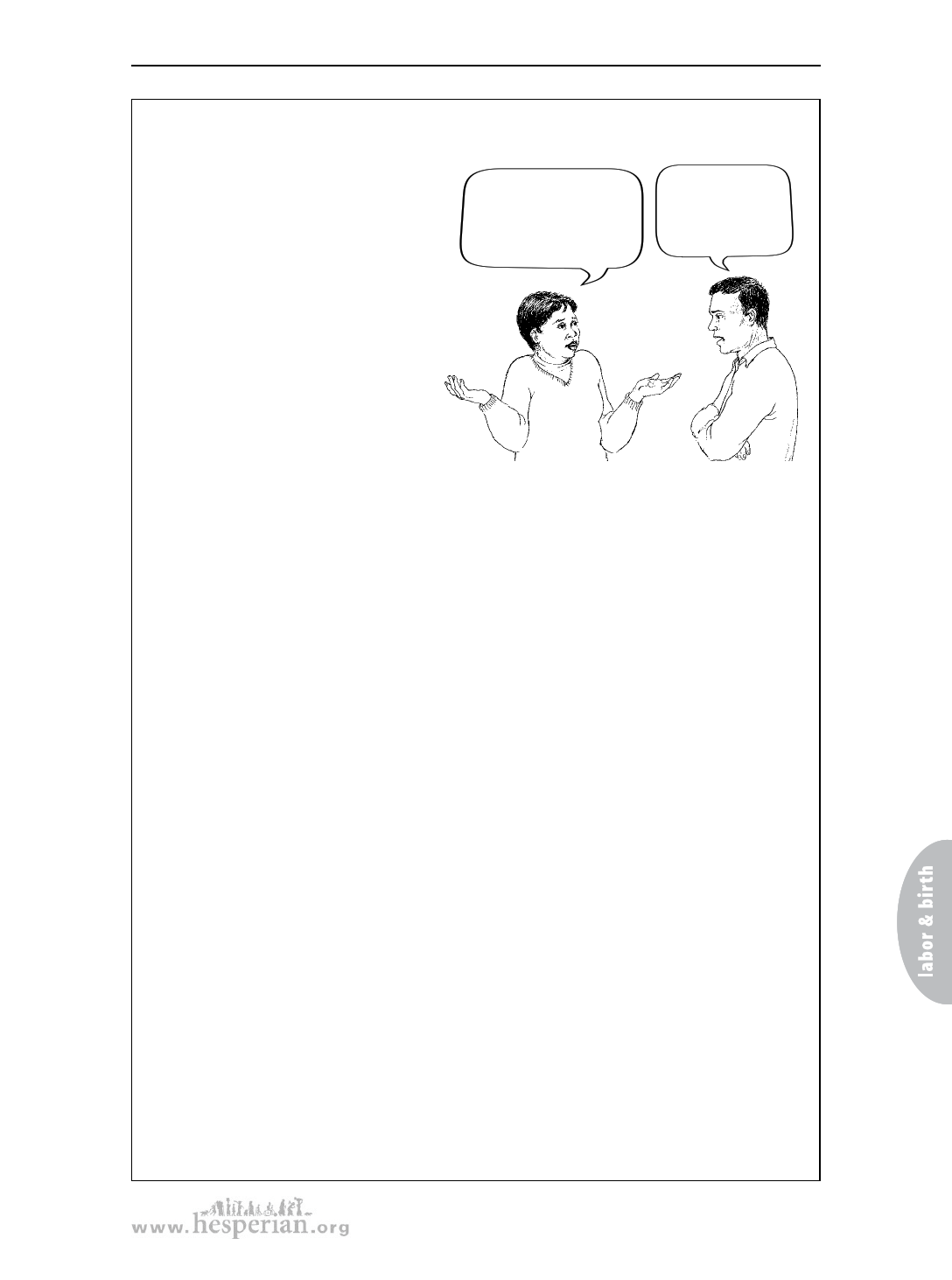
Bleeding after birth
“Active management” of stage 3
Throughout this book we suggest
that you care for women in the
ways that medical science has
proven will save the most lives
and cause the least harm.
Most births are
healthy. Why should
we interfere when it’s
not necessary?
Many women
die after birth.
This will save
lives!
But medicine is not simple.
Experienced, skilled health workers
can have conflicting ideas about
how to keep people healthy. And
lifesaving tools or medicines are
not available in many parts of
the world. Here is an example:
International medical groups now
recommend that midwives and doctors “actively manage” the 3rd stage of
labor. What they mean by active management of the 3rd stage is:
1. give oxytocin or other medicines (see page 228) to every woman
immediately after she gives birth,
2. guide every woman’s placenta out shortly after the birth, and
3. rub the womb after the placenta is born.
Medical studies of women giving birth in hospitals have shown that
active management reduces the number of women who bleed heavily
after birth. If the health authority in your community recommends that
you manage birth in this way, we suggest that you do so.
In this book, though, we describe how to manage the 3rd stage
only after a problem arises. We do this for a few reasons:
• Most midwives do not have oxytocin, or if they do, only have a little.
Also, many midwives do not have a big supply of sterile needles to
inject oxytocin. These midwives may need to save the little oxytocin
they have for when someone is already bleeding.
• Most women do not bleed too much after birth. Not every woman
needs oxytocin, and many women do not want to be given a
medicine that they do not need.
• Guiding the placenta out by hand is risky. You can accidentally break
the cord or even pull the womb out of the woman’s body. If you
work in a hospital and have access to surgery in an emergency,
pulling out the placenta may prevent bleeding. But if you are far
from emergency care, guiding the placenta out by hand may cause
problems that you are unable to solve.
225
A Book for Midwives (2010)